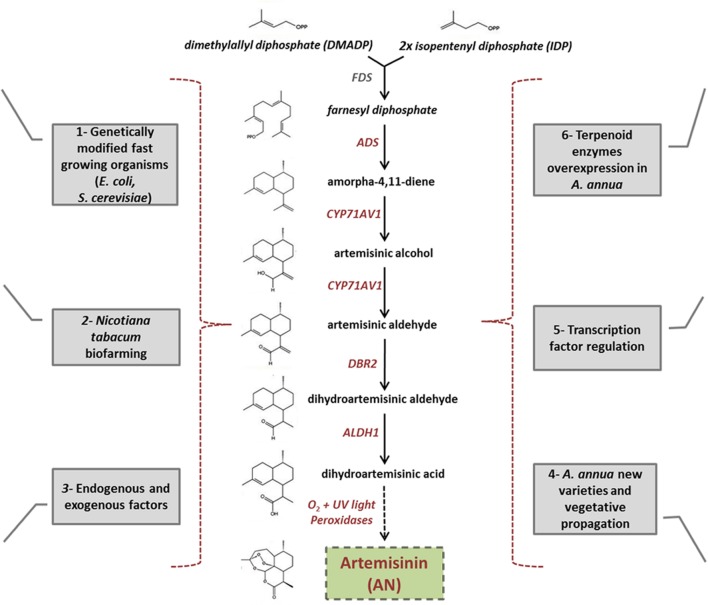FIGURE 3.
Diagram showing the different biofarming alternatives used instead of AN chemical synthesis. (1) Use of genetically modified, fast growing organisms, such as Escherichia coli and Saccharomyces cerevisiae, for AN production. (2) Nicotiana tabacum used as a model plant for molecular farming. (3) Plant endogenous factors, such as phytohormones and external abiotic factors, positively affect both trichome proliferation and artemisinin biosynthesis. (4) Crop-breeding and vegetative propagation used to obtain tissue with higher AN content (5) Use of transcription factors, that positively regulate artemisinin pathway, as an approach for increasing the amount of this molecule in the plant. (6) Metabolic engineering of overexpressing endogenous enzymes of terpenoid biosynthesis in A. annua. The artemisinin biosynthetic pathway occurs exclusively in the glandular trichomes of A. annua plant. Despite AN biosynthesis utilizes carbon mainly from the mevalonate pathway in the cytosol, Farnesyl diphosphate (FPP), AN precursor, is partially synthetized in the plastid through a non-mevalonate pathway. Therefore, redirection of the mevalonate pathway away from the cytosol, to plastid compartments, such as chloroplasts and mitochondria, may be a novel approach for increasing significantly AN production.

